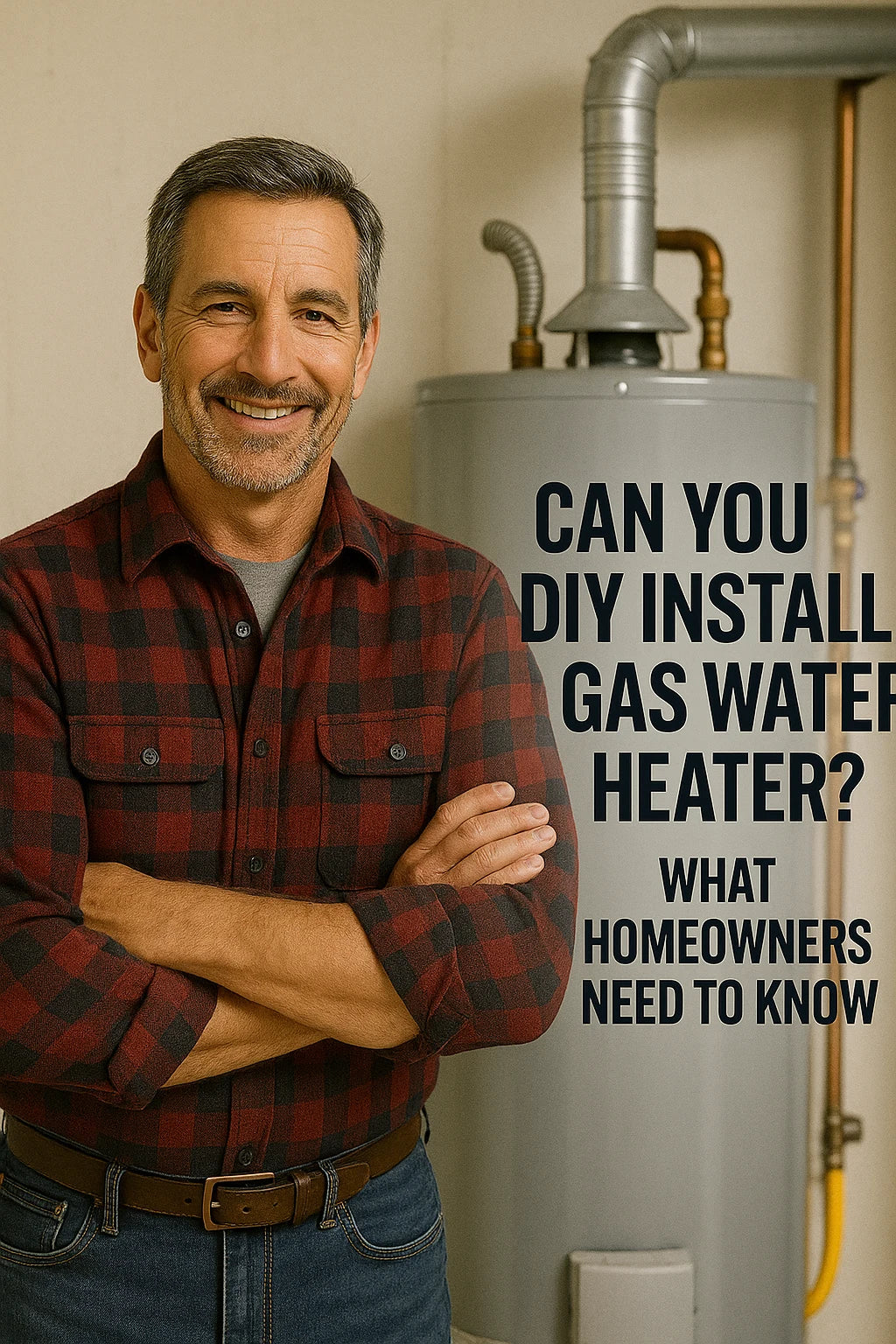Replacing your gas water heater yourself can save hundreds—or cost thousands if done incorrectly. As Mike Sanders, I’ve coached plenty of homeowners through safe upgrades, but I’ve also seen the dangerous mistakes that come from DIY gas installations gone wrong. In this 2025 guide, I’ll walk you through when a homeowner can reasonably consider DIY, when to hire a pro, and exactly what’s involved.
⚠️ The Short Answer: Can You DIY a Gas Water Heater Install?
✅ Technically yes — IF:
-
You are replacing a similar unit with compatible specs.
-
All existing venting and gas line sizes remain unchanged.
-
You fully understand gas safety, codes, permits, and proper testing.
🚫 But strongly consider hiring a pro if:
-
You are switching venting types (atmospheric to power vent).
-
Any new gas line piping or resizing is needed.
-
Vent routing or chimney needs major work.
-
You are unfamiliar with gas pressure testing or combustion safety.
Gas installation errors carry serious safety risks. Know your limits.
🧰 Tools & Materials Needed for DIY Installation
| Tool | Purpose |
|---|---|
| Adjustable Wrenches | Gas line fittings |
| Pipe Thread Sealant | Leak-free connections |
| Gas Leak Detector Solution | Check for leaks |
| Tubing Cutter | Water lines |
| Flare Nut Wrench | Flexible gas connectors |
| Multimeter | Ignition system diagnostics |
| Water Heater Dolly | Safely moving old/new units |
| Vacuum | Burner cleaning |
| CO Detector | Post-install safety verification |
Many tool rental centers stock heavy-duty dollies and lifting aids for this type of job.
📋 Step-by-Step Overview of DIY Replacement
1️⃣ Preparation:
-
Turn off gas supply.
-
Turn off cold water inlet.
-
Allow tank to cool completely.
-
Disconnect water lines, gas line, and vent pipe.
-
Drain old tank fully before removal.
2️⃣ Install New Unit:
-
Position new heater in exact footprint.
-
Install dielectric unions on water connections.
-
Use Teflon paste or gas-rated thread compound on fittings.
-
Reconnect vent pipe (ensure proper slope).
-
Attach flexible gas connector with flare fittings.
3️⃣ Testing & Commissioning:
-
Perform full gas leak test.
-
Verify proper draft using smoke or match test at draft hood.
-
Confirm burner ignition and stable flame pattern.
-
Monitor for leaks during first full heating cycle.
-
Test nearby CO detectors.
🏠 Legal & Code Considerations (2025 Updates)
-
Permits: Often required for gas water heater replacements.
-
Low-NOx Compliance: Mandatory in many states
-
Venting Code (NFPA 54): Strict slope, size, and termination rules
-
Earthquake Straps: Required in seismic regions.
-
Expansion Tanks: Required if backflow prevention exists.
-
Carbon Monoxide Detectors: Strongly advised near bedrooms
Ignoring codes can void warranties and create safety hazards.
🔧 Common DIY Mistakes to Avoid
🚫 Undersized or kinked flexible gas connectors
🚫 Incorrect vent slope or termination height
🚫 No combustion air source for atmospheric models
🚫 Forgetting leak testing procedures
🚫 Misaligned draft hood preventing proper updraft
🚫 Improper water shutoff and thermal expansion control
🔬 Special Cautions for Atmospheric Vent Models
The State ProLine Atmospheric Vent 50-Gallon 40,000 BTU Gas Water Heater is one of the more straightforward models to DIY if your existing vent system is fully compatible.
-
Ensure 1/4" per foot vent rise slope.
-
Vent pipe size typically 3" or 4" diameter B-vent.
-
Chimney liner may be required if shared venting with furnace.
-
Perform draft verification after startup.
💵 DIY vs. Professional Installation Cost Comparison (2025)
| Task | DIY Cost | Pro Cost |
| Equipment | $700-$1,200 | $700-$1,200 |
| Permits | $75-$200 | Often included |
| Tools (if needed) | $100-$300 | N/A |
| Labor | $0 | $800-$1,500 |
| Disposal | $50 | Usually included |
DIY Savings Potential: $800-$1,500 IF executed correctly.
🔬 Warranty Considerations
-
Manufacturer warranties often require licensed professional installation.
-
Improper installs may void both parts and tank warranties.
-
Always document installation steps and save photos for future claims.
🧯 Post-Installation Safety Checklist
✅ All gas joints leak-tested
✅ Draft hood secure and vent slope correct
✅ Burner flame is steady blue (no yellow tips)
✅ T&P relief valve tested for proper function
✅ CO detectors tested and functional
✅ Water temperature set to safe 120°F standard
🧠 Mike Sanders' Final DIY Verdict for 2025
✅ Reasonable for highly skilled homeowners IF:
-
No venting or gas line modifications are needed.
-
You strictly follow safety protocols.
-
You fully comply with local codes and permits.
🚫 Hire a licensed pro IF:
-
You are uncertain about gas or venting safety.
-
Your home requires venting reroutes or gas pipe upgrades.
-
You want full warranty protection and permit handling.
Remember: Gas work carries real risk. When in doubt, pay for peace of mind.
🔗 Verified Helpful Resources:
About Mike Sanders:
With 20+ years of hands-on experience in safe water heater installation, my mission is to help homeowners confidently balance DIY savings with long-term safety and efficiency.
In the next topic we will read about: Gas vs. Electric Water Heaters: Which Is Right for Your Home in 2025?







